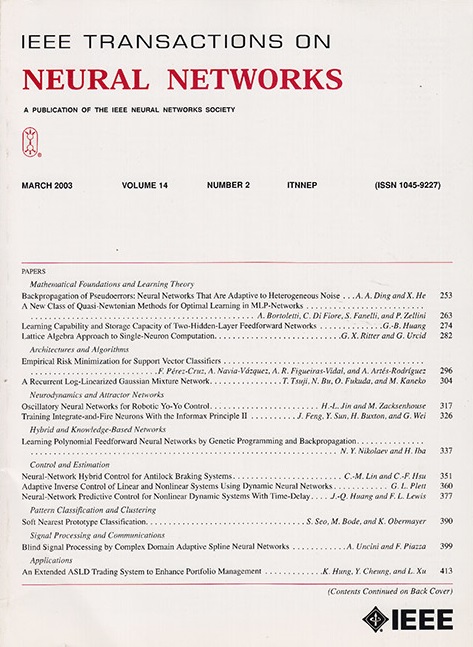Discovery of Shared Latent Nonlinear Effective Connectivity for EEG-Based Depression Detection
IF 10.2
1区 计算机科学
Q1 COMPUTER SCIENCE, ARTIFICIAL INTELLIGENCE
IEEE transactions on neural networks and learning systems
Pub Date : 2024-12-17
DOI:10.1109/TNNLS.2024.3514182
引用次数: 0
Abstract
Granger causality (GC) effective connectivity (EC) calculated from electroencephalogram (EEG) signals has been widely used in mental disorder detection. However, the existing methods only take into account linear dynamics or nonlinear dynamics within a single sample, ignoring the nonlinear dynamics shared by the same class of subjects. In this article, a model combining graph neural networks (GNNs) and variational autoencoders (VAEs) is proposed to construct shared latent nonlinear EC from raw EEG signals for depression detection. Several convolution modules and fully connected layers are used in the graph encoding network to learn the embeddings of the connectivity connected by every two EEG channels. In the graph decoding network, a class-specific Gaussian mixture model (GMM) is introduced in the VAEs to model shared dynamics in EC of the same class of subjects, and the shared dynamics combine the encoded embeddings of the EC and the past time series to restore raw EEG signals. Through a node-to-edge encoding process and an edge-to-node decoding process, the shared latent nonlinear EC in EEG signals can ultimately be learned by gradually optimizing the model’s loss function. The performance of the proposed method is verified on several open-accessed datasets. The excellent results prove that the proposed neural networks can learn more generalized nonlinear EC representations, and shared latent dynamics discovery can also help to identify depression better. The code is available at基于脑电图的抑郁检测中共享潜在非线性有效连通性的发现
从脑电图(EEG)信号中计算出的Granger因果关系(GC)有效连通性(EC)在精神障碍检测中得到了广泛的应用。然而,现有的方法只考虑了单个样本内的线性动力学或非线性动力学,而忽略了同一类对象所共有的非线性动力学。本文提出了一种结合图神经网络(GNNs)和变分自编码器(VAEs)的模型,从原始脑电信号中构建共享的非线性隐隐电位,用于抑郁检测。在图编码网络中使用了多个卷积模块和全连通层来学习每两个脑电信号通道连接的连通性的嵌入。在图解码网络中,将一类高斯混合模型(GMM)引入到图解码网络中,对同一类对象的脑电信号进行共享动态建模,共享动态将脑电信号的编码嵌入与过去时间序列相结合,恢复原始脑电信号。通过节点到边的编码过程和边到节点的解码过程,通过逐步优化模型的损失函数,最终学习到脑电信号中共享的潜在非线性电信号。在多个开放存取数据集上验证了该方法的性能。优异的结果证明,所提出的神经网络可以学习更广义的非线性EC表示,并且共享潜在动力学发现也有助于更好地识别抑郁症。代码可在https://github.com/william-yuan2012/DSLNEC-tscausality上获得。
本文章由计算机程序翻译,如有差异,请以英文原文为准。
求助全文
约1分钟内获得全文
求助全文
来源期刊

IEEE transactions on neural networks and learning systems
COMPUTER SCIENCE, ARTIFICIAL INTELLIGENCE-COMPUTER SCIENCE, HARDWARE & ARCHITECTURE
CiteScore
23.80
自引率
9.60%
发文量
2102
审稿时长
3-8 weeks
期刊介绍:
The focus of IEEE Transactions on Neural Networks and Learning Systems is to present scholarly articles discussing the theory, design, and applications of neural networks as well as other learning systems. The journal primarily highlights technical and scientific research in this domain.
 求助内容:
求助内容: 应助结果提醒方式:
应助结果提醒方式:


